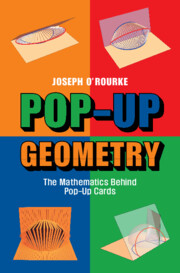
- Cited by 2
-
Cited byCrossref Citations
This Book has been cited by the following publications. This list is generated based on data provided by Crossref.
Henle, Jim 2022. The Pleasures of Friends. The Mathematical Intelligencer, Vol. 44, Issue. 3, p. 277.
Zhang, Yuehao Gu, Yuanqing Chen, Yan Li, Ming and Zhang, Xiao 2023. One-DOF Rigid and Flat-Foldable Origami Polyhedrons with Slits. Acta Mechanica Solida Sinica, Vol. 36, Issue. 4, p. 479.
- Publisher:
- Cambridge University Press
- Online publication date:
- March 2022
- Print publication year:
- 2022
- Online ISBN:
- 9781009093095




